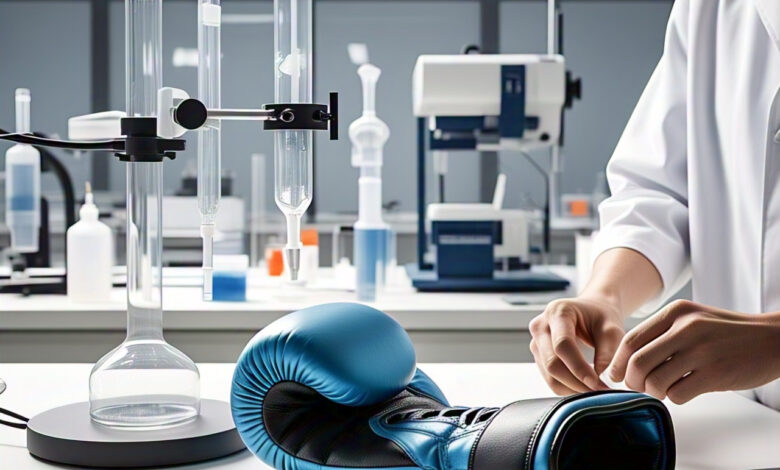Train Safer, Hit Harder: The Science Behind Boxing Gear That Performs
What makes one pair of gloves feel like pillows and another hit like a hammer?

The answer lies in the science of design, material composition, and impact distribution. High-performance boxing gear is no longer built on guesswork, it is designed to control force, stabilize the body, and enhance safety without dulling effectiveness.
With over 90,000 boxing-related injuries reported annually in the U.S. alone, safety is no longer an afterthought. Innovations in custom boxing gloves are reshaping how fighters train and compete, especially as more athletes shift to high-frequency sparring sessions and intense circuit drills.
Combat sports researchers have shown that even amateur boxing can result in repetitive head trauma if protective gear is substandard. Boxing gear now has to do two things, absorb damage and optimize power delivery.
What Makes Boxing Gloves So Essential?
The glove is a calibrated tool built to protect the knuckles, wrist, and the opponent’s body from concentrated trauma. It is not only a padded hand cover.
What the Research Says:
A 2019 study found that pneumatic boxing gloves with air bladders significantly reduced peak impact force and loading rate over repeated hits compared to conventional gloves. These gloves could help make boxing safer.
Key Elements to Look For:
- Foam Type: Open-cell foam disperses energy better but compresses over time. Closed-cell foam lasts longer but transfers more shock.
- Weight Distribution: A properly balanced glove supports wrist alignment and reduces strain.
- Closure System: Lace-ups offer tighter wrist stability; Velcro allows faster wear but sometimes compromises tightness.
Training Camp Insight:
Fighters in high-altitude training camps often prefer 16 oz gloves with layered foam to protect both sparring partners and their own joints, especially during long prep phases.
Is Headgear Really Making a Difference?
Contrary to popular belief, headgear doesn’t prevent concussions. It reduces the risk of superficial injuries and can slightly buffer rotational force during glancing blows.
Scientific Note:
Research indicated that different types of boxing headgear, including full-face designs, can reduce the risk of facial injuries. The piece highlighted that full-face headgear offers comprehensive protection for the skull and face. It potentially minimizes the likelihood of injuries such as broken noses or cheekbones.
Top Features That Count:
- Peripheral Vision: Wide eye openings help maintain defensive awareness.
- Padding Zones: Denser padding around temples and jaw helps absorb more rotational force.
- Chin Strap Fit: A secure strap prevents shifting, especially during clinch work.
Real Gym Scenario:
In Tokyo’s boxing academies, headgear fit is tested under live sparring before being approved for competition prep. Fighters note that poor fit is often worse than no gear at all.
Do Hand Wraps Really Prevent Injuries?
Yes, and significantly. The small bones in the hand are vulnerable, especially when delivering hooks or uppercuts with poor form.
Scientific Insight:
A study from Western University examined how hand wraps protect against injuries. The research concluded that hand wraps significantly reduce the risk of hand injuries by providing structural support and distributing impact forces more evenly across the hand.
What to Focus On:
- Length and Elasticity: Longer wraps give better coverage. Elastic wraps conform better to hand shape.
- Knuckle Padding: Gel-padded wraps offer an extra layer of protection for heavy hitters.
- Wrist Support: Tighter wrap around the wrist stabilizes ligaments during impact.
Training Room Reminder:
Elite trainers often double-wrap for fighters with prior wrist issues. Some camps use wrap templates to ensure consistency in hand protection.
Are Boxing Shoes More Than Just Footwear?
Boxing shoes enhance agility, balance, and power transfer through the legs. The wrong sole or ankle cut can disrupt entire footwork patterns.
Research-Based Observation:
A study investigated how different shoe sole properties affect lateral stability during sideward cutting movements. The findings suggest that specific sole designs can enhance lateral stability, which is vital for activities involving quick directional changes
Key Design Factors:
- Grip and Traction: Rubber soles that provide rotational grip help with explosive turns.
- Ankle Cut Height: Mid-cut provides ankle stability without sacrificing movement.
- Weight: Lightweight designs reduce fatigue during rounds.
Fighter Anecdote:
In Cuban boxing academies, shoe fitting is considered part of skill development. Athletes are trained to pivot based on specific shoe responsiveness, especially for southpaw fighters.
How is Modern Tech Enhancing Boxing Gear?
Some of the latest innovations blend technology and tradition. Smart custom gloves with impact sensors, temperature-regulating wraps, and AI-analyzed training shoes are all becoming mainstream.
Data Snapshot:
- Smart gloves now track punch count, type, and force.
- Embedded RFID chips in gear track training hours and wear patterns.
- 3D-printed mouthguards offer personalized jaw protection with 90% less fit error.
Top brands like Hayabusa, Rival, and Winning are partnering with sports labs to fine-tune gear performance through thousands of data points.
What Happens When Gear Fails?
Equipment failure leads to longer recovery times, disrupted training cycles, and even career-ending damage. Coaches are now required by many commissions to log gear checks before every major sparring session.
A national amateur tournament in Canada saw three injuries in one night due to worn-out gloves. Organizers then enforced mandatory inspection policies, significantly reducing repeat incidents.
How to Choose the Right Gear Based on the Training Phase?
Selecting the right boxing gear for each training phase is essential to enhance performance and minimize the risk of injury. Each phase requires specific boxing gear, and having access to wholesale boxing equipment, from heavier gloves for conditioning to lighter gloves for sparring or fight simulations, ensures the best support at all times.
| Training Phase | Gloves | Headgear | Wraps | Shoes |
| Conditioning | 14-16 oz heavy gloves | Full-face | Long cotton wraps | Lightweight low-cut |
| Technical Sparring | 16 oz layered foam | Thick temple pads | Elastic with gel core | Mid-cut with strong grip |
| Bag Work | 12 oz with wrist wrap | Optional | Knuckle focused | High-traction sole |
| Fight Simulation | 10 oz pro gloves | Open-face | Custom fit | Mid-cut, ankle reinforced |
Conclusion
Gear is no longer just protective! The glove that guards against fractures or the shoe that anchors a perfect pivot, modern boxing gear is backed by data, shaped by real-world experience, and driven by evolving standards. Investing in the right custom boxing gear goes beyond luxury, it’s about lasting longer in the ring and training smarter every day
Answers You Need!
1. Can old gloves still be used for bag work?
Only if the padding is intact and the wrist support remains firm. Otherwise, injury risk increases.
2. Is lace-up better than Velcro for all gloves?
Lace-up offers better wrist stability but takes longer to secure. Velcro is suitable for solo training.
3. Are more expensive gloves always better?
Not necessarily. Price doesn’t always reflect quality. Material, fit, and brand reputation matter more.
4. How often should gear be replaced?
Gloves and wraps should be replaced every 6–12 months depending on usage. Shoes can last longer but should be inspected for sole wear.
5. Do pros use the same gear for all types of training?
Different gloves and wraps are used for bag work, sparring, and fights. Headgear is typically reserved for sparring only.


